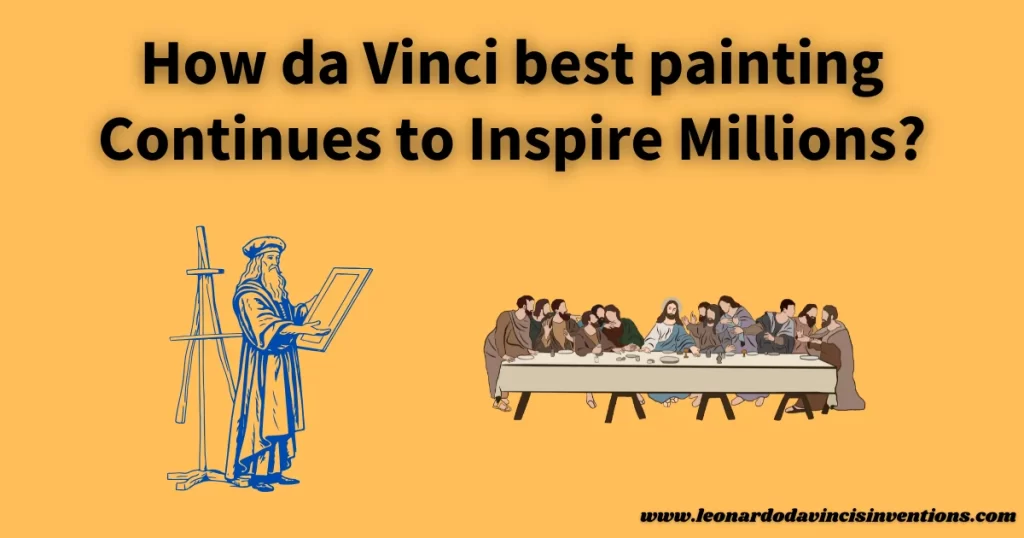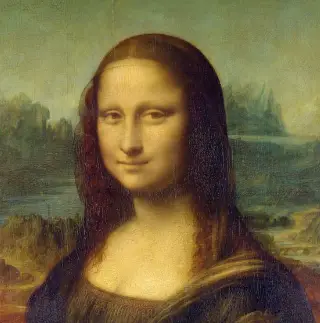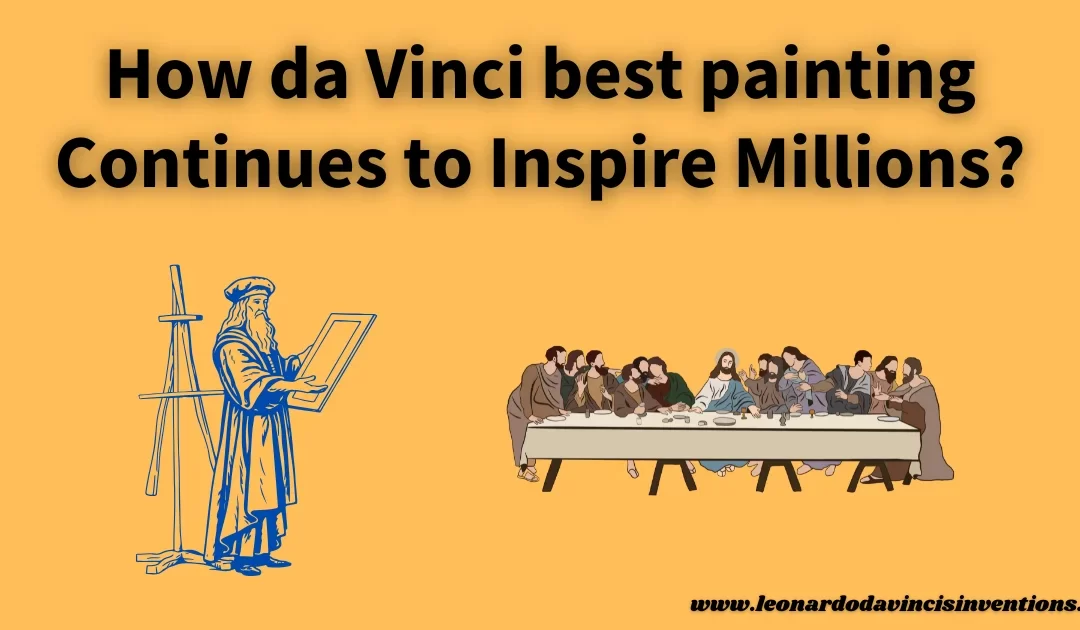
Da Vinci’s best painting, the Mona Lisa, has fascinated people for centuries. Many still wonder what makes this artwork so special.
Millions visit, study, and admire the Mona Lisa because of its mysterious expression and unique techniques. Its impact on art and popular culture remains strong.
People who look closely at da Vinci’s painting find new inspiration. Art from the past can shape the way you see the world today.
If you have ever wondered what makes this masterpiece so powerful, you are not alone. Discover the secrets behind its influence and see how da Vinci’s work inspires creativity, learning, and even modern inventions for millions around the globe.
The Enduring Legacy of da Vinci best painting in Renaissance Art
Leonardo da Vinci’s best painting remains one of art history’s most studied and influential works. Its groundbreaking techniques and striking realism have inspired artists, historians, and admirers for centuries.
How Leonardo da Vinci’s Masterpiece Shaped Renaissance Art
Leonardo da Vinci’s Mona Lisa transformed Renaissance art by setting new standards in portrait painting and composition. His attention to detail and use of light and shadow made figures appear lifelike.
The Mona Lisa’s mysterious smile became a hallmark of Leonardo’s skill. European artists tried to imitate his ability to capture subtle expressions and emotions.
The painting’s impact helped define the ideals of artistic mastery and naturalism in Western art. It is displayed at the Louvre Museum and attracts millions of visitors annually.
Exploring the Artistic Genius Behind da Vinci best painting
Leonardo da Vinci approached painting as both a science and an art. His observations of the world around him shaped his unique style.
In the Mona Lisa, he used delicate layers of paint to create lifelike skin tones and soft transitions between light and dark. His studies in engineering, anatomy, and natural phenomena enriched his portraits with depth.
Leonardo’s thoughtful composition and atmospheric perspective gave his paintings a rare sense of dimensionality. His willingness to experiment made him a true Renaissance master.
He set a new artistic expression and detail standard by focusing on human emotion and personality. Artists today continue to feel his influence.
The Role of Human Anatomy and Proportions in His Work
Leonardo da Vinci’s fascination with human anatomy and proportions shaped every aspect of his art. He filled notebooks with sketches and anatomical studies to help him depict the body accurately.
The Mona Lisa shows Leonardo’s commitment to realistic anatomy. The careful structure of her hands, face, and posture reflects his understanding of bone and muscle beneath the skin.
He often used mathematical principles to guide the placement and size of features, as seen in his drawing of the Vitruvian Man. This scientific approach raised the bar for Renaissance art and encouraged other artists to study anatomy more carefully.
Sfumato Technique and Its Impact on Artistic Expression
Leonardo’s sfumato painting technique set a new standard for blending colors and edges. He avoided harsh lines in paintings like the Mona Lisa and Lady with an Ermine, creating soft transitions between tones and shadows.
Sfumato allowed Leonardo to portray realistic light effects and subtle facial expressions. This technique gave his portraits an enigmatic and dreamlike quality.
Da Vinci’s mastery of sfumato influenced countless artists during and after the Renaissance. Today, art historians regard this blending technique as a mark of his artistic genius and a foundation for modern portrait painting.
Symbolism and Religious Themes in da Vinci best painting
Symbolism and religious themes played a significant role in Leonardo’s work. The Mona Lisa’s background landscape may suggest harmony between humanity and nature.
Leonardo explored Christian beliefs and moral lessons in works like The Last Supper. He embedded subtle details within his paintings to encourage reflection.
Hand positions, facial expressions, and objects often held deeper meanings tied to spiritual or philosophical ideas. His ability to blend religious themes with naturalistic detail allowed Leonardo to create artworks that are both accessible and thought-provoking.
Iconic Artworks That Define da Vinci’s Best Paintings: Timeless Appeal

Leonardo da Vinci’s masterpieces showcase a level of artistic genius that shaped art history. Each iconic artwork stands out thanks to its technique, creativity, and lasting influence on Renaissance art and beyond.
The Mona Lisa’s Mysterious Smile and Artistic Mastery
The Mona Lisa remains the most recognized painting in the world. People celebrate her mysterious smile and realistic details.
Housed in the Louvre Museum, this artwork draws millions of visitors annually. Da Vinci’s use of sfumato creates lifelike transitions between light and shadow.
Her enigmatic expression continues to spark debates and interpretations. The Mona Lisa is often called the pinnacle of Renaissance art for its balance of technique and emotion, as detailed in collections of famous artworks by Leonardo da Vinci.
The Last Supper: Visual Storytelling and Composition Excellence
The Last Supper shows da Vinci’s skill in composition and storytelling. Painted on the wall of a convent in Milan, this masterpiece depicts the dramatic moment when Jesus reveals a betrayal among his disciples.
Da Vinci organized the figures to lead the viewer’s eye toward Christ at the center. The use of perspective, gesture, and expression gives depth to the scene.
Its religious themes and emotional depth have secured its status as a landmark in art history. Restoration projects highlight the importance of art preservation for works with such historical significance.
Vitruvian Man and the Fusion of Art and Science
Vitruvian Man blends artistic vision and scientific understanding. Leonardo sketched this figure to show human anatomy and perfect proportions.
The drawing is vital for studying human symmetry, showing how the body fits within a square and a circle. It stands as an example of da Vinci’s innovation and desire to connect art with science.
This image continues to inspire artists, scientists, and students interested in the relationship between art and science.
Lady with an Ermine and the Art of Portrait Innovation
Lady with an Ermine highlights da Vinci’s talent for creating lifelike portraits with distinct personalities. The subject, Cecilia Gallerani, is captured holding an ermine, and her gentle gaze sets her apart from traditional portraits of the time.
Light, shadow, and subtle hand gestures introduce a sense of movement and realism. The animal adds symbolism, linking innocence and virtue to her character.
This painting broke new ground in how portraiture could express identity and status. Its artistic innovation continues to stand out in the history of Renaissance art.
Salvator Mundi and Virgin of the Rocks: Art Exhibitions and Preservation
Salvator Mundi and Virgin of the Rocks reveal da Vinci’s approach to spiritual and religious themes. He used both complex composition and delicate color.
Virgin of the Rocks uses innovative techniques to create a mysterious, atmospheric setting. Salvator Mundi captures Christ with subtle gestures and a serene expression.
Both paintings show intricate attention to detail and symbolism. Their displays in museums and auctions underscore the art legacy and fascination surrounding da Vinci’s name.
Ongoing conservation ensures that these iconic artworks will continue to inspire future generations.
Artistic Innovation and Cultural Impact of da Vinci best painting
Da Vinci’s paintings have stood the test of time. They shape how people view art and creativity.
His attention to detail, new painting techniques, and ability to show deep emotion leave a strong mark on artists and art lovers everywhere.
How da Vinci best painting continues to Inspire Artistic Exploration
Artists worldwide study da Vinci’s masterpieces to explore new ways of expressing themselves. The Mona Lisa fascinates viewers with its mysterious smile and lifelike presence.
Artists often try to understand how da Vinci used light, shadow, and delicate lines to create such emotion. Young painters use da Vinci’s methods, like sfumato, to add subtle transitions between colors and shadows.
Schools and museums use his works to teach about perspective, composition, and the use of color. Da Vinci’s drive to blend science with art motivates new generations to experiment with different media and techniques.
Creative exploration is now a foundation of many art programs. The standards he set during the Renaissance continue to inspire artists today.
The Influence of Leonardo da Vinci on Modern Painting Style
Modern painting owes much to da Vinci’s approach. His use of proportion, depth, and precise anatomy has guided artists for hundreds of years.
Today’s artworks incorporate elements from the Renaissance master’s famous paintings, such as The Last Supper and the Mona Lisa.
Painters often use techniques that da Vinci established to create dramatic effects. These include realistic lighting and careful composition.
Artists also study how da Vinci arranged his paintings to learn how to guide the viewer’s eye across a canvas. The balance between foreground and background remains important in modern works.
Da Vinci’s commitment to improvement and experimentation still inspires artists. Many push boundaries by mixing classic ideas with new materials and subjects.
Art Interpretation and the Fascination with Iconic Artwork
Interpreting da Vinci’s best painting remains a favorite topic for art historians and the public. The Mona Lisa’s mysterious expression sparks constant debate about her identity and feelings.
People are drawn to the artwork because it invites personal interpretation. This fascination has made the painting a symbol of artistic genius and creativity.
Museums like the Louvre host exhibitions, and millions visit to see the Mona Lisa. The mystery in da Vinci’s art encourages people to look deeper into the meaning behind his paintings.
These discussions explore symbolism, emotion, and the power of images.
The Role of Artistic Detail and Technique in Timeless Creations
Da Vinci’s masterpieces stand out for their precise technique and rich details. His careful study of human anatomy, plants, and nature helped him create lifelike and balanced paintings.
Small touches, like the subtle shading on the Mona Lisa’s face, show his skill in achieving artistic perfection. Da Vinci used sfumato to make his compositions feel soft and smooth.
His knowledge of perspective added depth to his work. Each brushstroke serves a purpose, highlighting his technical skill and creative vision.
Modern artists focusing on realism often look to da Vinci’s techniques for guidance. His devotion to detail shows how small features can significantly impact the finished work.
The Cultural Impact and Historical Significance of da Vinci best painting
Da Vinci’s best painting has become a symbol of the Renaissance and Western art. Its fame has reached beyond galleries and into popular culture.
The Mona Lisa, for example, often represents beauty, mystery, and intellectual achievement. Historians recognize its historical significance and cultural impact in art history.
It has inspired movies, books, and advertising, showing how art can shape society. The broad interest in da Vinci’s work means his influence will remain strong for many years.
Frequently Asked Questions
Leonardo da Vinci’s artworks are studied for their creativity, detail, and influence on the art world. His paintings hold major records for fame, value, and historical importance.
What was Leonardo da Vinci’s best painting?
Many experts consider the Mona Lisa Leonardo da Vinci’s best painting. Its realistic style, mysterious expression, and fine techniques make it stand out among his works.
What is Da Vinci’s most valuable painting?
Leonardo da Vinci’s painting Salvator Mundi is currently his most valuable painting. According to National Geographic, it sold at auction for $450.3 million, the highest price for any historical painting.
Who bought the $450 million painting?
Saudi Arabian prince Badr bin Abdullah bin Mohammed bin Farhan al-Saud, reportedly on behalf of Saudi Crown Prince Mohammed bin Salman, bought Salvator Mundi for $450.3 million.
What is the #1 most famous painting in the world?
The Mona Lisa is often called the most famous painting in the world. Visitors from many countries visit the Louvre Museum in Paris to see it in person.
Why is Mona Lisa’s painting so expensive?
The Mona Lisa is expensive because of its creator, unique history, legendary status, and unmatched influence. Its fame, da Vinci’s genius, and use of techniques like sfumato add to its value.
Where is Mona Lisa buried?
The Mona Lisa is not a person who can be buried; it is a painting. If asking about Lisa Gherardini, the woman believed to be the model, her remains are thought to be in Florence, Italy.
Why is Mona Lisa so popular?
The Mona Lisa stands out for its lifelike look, gentle smile, and detailed background. Its fame also comes from da Vinci’s skill, the mystery around the subject, and historical events like its theft and recovery, which added to its legend.
What is Leonardo da Vinci’s 2nd most famous painting?
Many consider The Last Supper da Vinci’s second most famous painting. It shows Jesus and his disciples during a key moment and is praised for its composition and emotional depth.
Is the Mona Lisa on display real?
Yes, the Mona Lisa on display at the Louvre Museum is the original painting by Leonardo da Vinci. The museum keeps it in a special glass case for protection.
What was Leonardo da Vinci’s masterpiece that got destroyed?
One of Leonardo’s best-known lost works is The Battle of Anghiari. He painted this large mural in Florence’s Palazzo Vecchio.
Later, someone repainted the wall, and the mural was lost.




 Leonardo Bianchi,
the creator of Leonardo da Vinci's Inventions.
Thank you for visiting
Leonardo Bianchi,
the creator of Leonardo da Vinci's Inventions.
Thank you for visiting